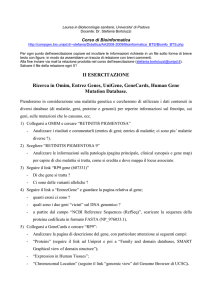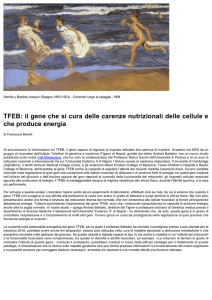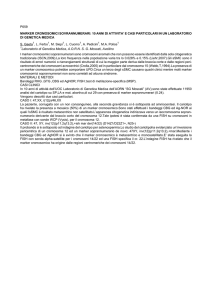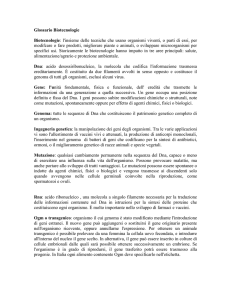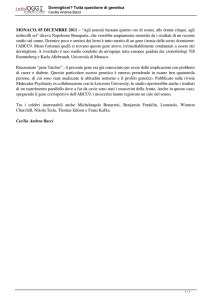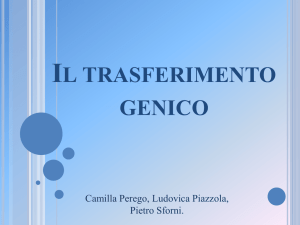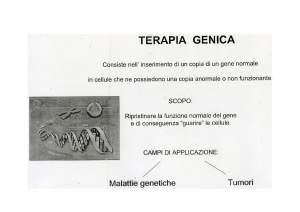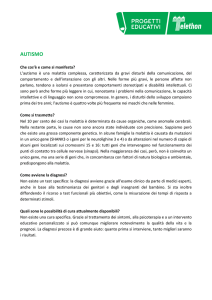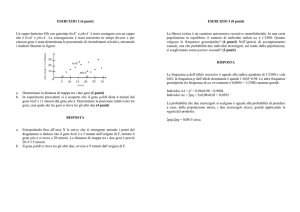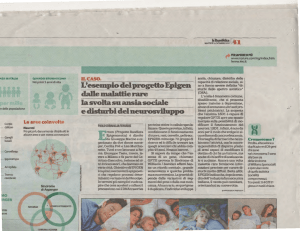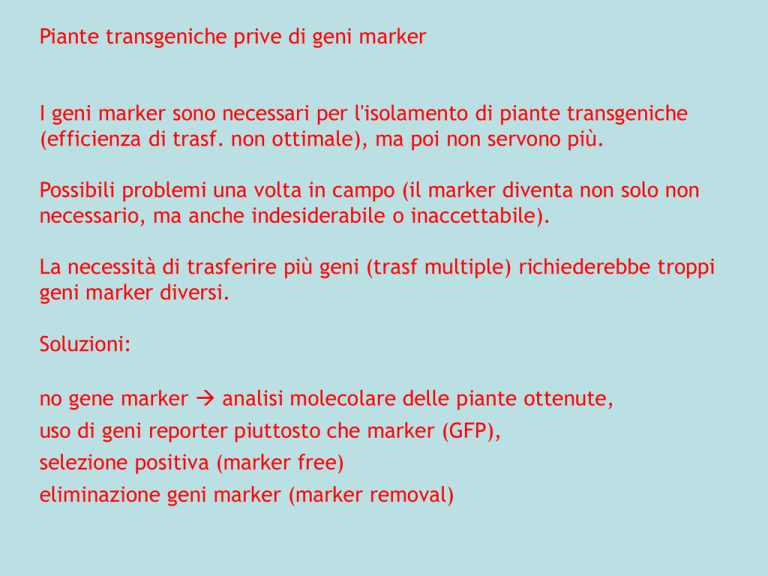
Piante transgeniche prive di geni marker
I geni marker sono necessari per l'isolamento di piante transgeniche
(efficienza di trasf. non ottimale), ma poi non servono più.
Possibili problemi una volta in campo (il marker diventa non solo non
necessario, ma anche indesiderabile o inaccettabile).
La necessità di trasferire più geni (trasf multiple) richiederebbe troppi
geni marker diversi.
Soluzioni:
no gene marker analisi molecolare delle piante ottenute,
uso di geni reporter piuttosto che marker (GFP),
selezione positiva (marker free)
eliminazione geni marker (marker removal)
Marker free
Recenti applicazioni, alle cellule trasformate si dà un vantaggio
metabolico non selettivo.
Si aumenta la capacità di crescita e di rigenerazione delle cellule
trasformate rispetto a quelle non trasformate.
Fosfomannoso isomerasi, pmi.
Substrato di crescita contiene mannosio. Una volta nella cellula viene
fosforilato a Mann-6-P, si accumula inibendone la crescita.
Se le cellule sono trasformate hanno l'isomerasi che converte il
mannosio in fruttosio che può essere metabolizzato.
Mannose selection has so far been shown to be successful for the
transformation of sugar beet, potato, oil seed rape, wheat and maize.
Facilmente saggiabile
con saggio
colorimetrico
Marker removal
Deve essere rapido e molto efficiente e limitare il numero di
trasformazioni aggiuntive o di incroci sessuali.
Diversi metodi per eliminare il gene marker (tradizionale) dopo la
rigenerazione:
co-trasformazione
excisione.
For cotransformation various arrangements of marker gene (red) and
the gene of interest (target gene, green) are possible on the vector:
- two different strains of Agrobacteria, each with a transformation
vector; one vector contains the marker gene, the other the target gene
(top diagram);
- one bacterial strain with two vectors, each with one gene (centre);
-one bacterial strain with one
vector, on which the two genes are
located at separate sites (bottom).
Cotransformation is successful if
both
genes
are
integrated
independently of each other
Once the target and marker gene have been integrated independently
into the plant genome, they can be separated again in the progeny of
these genetically modified plants: the progeny receive one gene or the
other but not both.
Parents: Gametes (sex cells) contain
only one chromosome set. It may carry
only the marker gene (M, red), the
target gene (Z, green), both genes or
neither gene.
Progeny: Various combinations of
marker and target genes are possible
in the progeny generation. The plants
that do not carry a marker gene (blue)
can be used for further breeding.
Mathematically, every fourth plant of
this
marker-gene-free
group
of
progeny will carry neither marker gene
nor target gene.
Analisi della progenie dopo 1° incrocio F1 per segregazione tra marker
e gene d'interesse.
Bisogna essere certi che ci sia solo una copia di entrambi i geni e che
siano davvero unlinked.
Bisogna fare uno screening su molti individui per trovare quello giusto.
Excisione
Eliminazione del marker dopo la trasformazione.
Marker e gene d'interesse nello stesso locus vengono separati da una
ricombinazione sito specifica.
In the early 1990's a new method was developed to delete a specific
portion of DNA. The procedure took advantage of the basic research
performed on the bacteriophage called P1. In this virus, there is an
enzyme called cre and particular DNA sequences called lox P sites. The
lox P sites work in pairs and they flank a segment of DNA called a target
When the cre enzyme binds to the lox P sites, it
cuts the lox sites in half and then splices together
the two halves after the target DNA has been
removed
M: gene marker
R: ricombinasi sotto il
controllo di un
promotore inducibile,
tramite induttore ‘ind’
Siti loxP
Ricombinasi Cre del fago P1 rimuove il marker fiancheggiato dai siti lox
(34bp ripetuti diretti).
Ricombinasi espressa in modo transiente o da un altro T-DNA che viene
poi fatto segregare oppure ancora da un gene posto anch'esso tra i siti
lox.
La re-inserzione della molecola deleta non si osserva perché la molecola
circolare prodotta non si replica e viene persa.
Applicabile anche ai plastidi.
Problema: evitare la continua espressione della ricombinasi per evitare
riarrangiamenti cromosomici su siti lox spuri.
Trasposasi
Marker (o gene d'interesse) fiancheggato da TIR.
Trasposoni a DNA
L'efficienza non e' sufficientemente elevata e ci sono rischi che il
trasposone (o la trasposasi) causi riarrangiamenti cromosomici, serve
comunque l’analisi della progenie dove avviene la segregazione.



